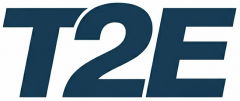I was recently asked by a college about my thoughts on Blockchain and its future. Blockchain, a much-discussed technology, has yet to fully demonstrate its transformative potential through widespread, effective implementation. Leaders across industries are eager to leverage its capabilities, but understanding the technology is a crucial first step in determining whether and how to adopt it successfully.
What is Blockchain?
One of the first steps in adopting blockchain technology is gaining a clear understanding of what it is and how it works. Here’s an overview to help demystify blockchain:
- Decentralized and Immutable: Blockchain is a secure, transparent, and decentralized digital ledger that records transactions between parties with efficiency and reliability.
- No Intermediaries Needed: It eliminates the need for middlemen, such as banks or financial institutions, enabling direct peer-to-peer transactions.
- Cryptographic Security: Blockchain uses advanced cryptography to protect data stored within its network.
- Fraud Detection: Transactions are verified by multiple nodes across the network, making fraudulent activity highly difficult to execute.
Blockchain technology offers immense potential with a wide range of applications. Many experts believe it has the power to revolutionize existing business models while creating opportunities for entirely new ones.
Blockchain has the power to transform the way businesses operate. With its decentralized, encrypted, and immutable ledger system, it offers unparalleled transparency, robust security, and accurate record-keeping. These qualities have the potential to redefine industry standards and drive innovation across sectors.
Blockchain Business Models
By streamlining processes, reducing costs, and increasing efficiency, blockchain offers substantial benefits for industries such as finance, healthcare, and supply chain management. It has the potential to disrupt traditional intermediaries and create novel business models. Here are some of the potential business models for Blockchain:
- Decentralized Applications (DApps): DApps are blockchain-based applications that run on a peer-to-peer network instead of a centralized server. This removes intermediaries and lowers costs, making them appealing for businesses.
- Smart Contracts: Smart contracts are self-executing agreements with terms written in code. They automatically enforce agreements, reducing the risk of error or fraud.
- Supply Chain Management: Blockchain’s transparent and unchangeable records can improve supply chain management by tracking a product’s journey from manufacturer to consumer. This boosts accountability and reduces fraud.
- Voting Systems: Blockchain technology has the potential to revolutionize voting systems by allowing for secure and transparent voting processes. This eliminates the possibility of tampering with votes or manipulating election results.
- Smart Property: Blockchain technology enables the digitization and tokenization of physical assets, simplifying ownership transfers and enhancing traceability. Known as smart property, this innovation has the potential to transform industries like real estate, art, and supply chain management.
- Identity Management: Traditional identity verification is often inefficient and vulnerable to fraud. Blockchain technology enables secure, unchangeable, and self-owned digital identities, making access to banking, healthcare, and government services faster and safer.
To unlock the potential of blockchain, technology leaders must first understand its strengths and limitations. They need to identify areas where blockchain can deliver measurable value and determine how to integrate it seamlessly into existing systems. This often requires collaboration with other organizations and the adoption of industry-wide standards to ensure interoperability.
Challenges with Blockchain
However, as an emerging technology, blockchain still faces significant challenges that hinder widespread adoption. Here are some of the primary obstacles:
- Regulatory Uncertainty: A clear regulatory framework for blockchain has yet to emerge. Governments around the world are still evaluating and defining policies for this technology, creating uncertainty for businesses trying to navigate legal compliance.
- Scalability Challenges: Blockchain frequently faces criticism for its sluggish transaction speeds and significant energy demands. These limitations make it difficult for blockchain to support high-frequency applications, such as credit card transactions or stock trading.
- Technical Complexity: Implementing blockchain solutions requires specialized expertise, posing a hurdle for companies that lack the necessary technical skills. Moreover, unresolved issues like scalability and interoperability between blockchain networks add further complexity.
- Interoperability Barriers: While blockchain aims to decentralize systems and eliminate intermediaries, achieving seamless communication between different blockchain networks remains a significant challenge. This lack of interoperability limits its broader adoption across industries.
- Absence of Standardization: The lack of universal standards in blockchain technology complicates interoperability even further. Multiple blockchain platforms and protocols, each with unique features, make it difficult for networks to work together effectively.
- High Energy Consumption: Blockchain’s reliance on computationally intensive cryptographic processes leads to significant energy demand. In some cases, the energy consumption of blockchain networks rivals that of entire small countries, raising concerns about sustainability.
These challenges represent significant barriers to corporate adoption and implementation of blockchain technology. Overcoming these obstacles will require continued innovation, collaboration, and regulatory clarity to fully realize blockchain’s transformative potential.
The Key Advantages of Blockchain
Blockchain technology offers several compelling benefits that make it a game-changer for businesses and industries. By recording all transactions on a public, tamper-proof ledger accessible to all relevant parties, it builds trust and eliminates the need for intermediaries. This not only saves time and money but also minimizes the risk of fraud. Here’s a closer look at its key advantages:
- Transparency: Blockchain provides complete transparency by recording every transaction on a shared public ledger. This ensures equal access to information for all parties involved, fostering accountability.
- Enhanced Security: Cryptographic techniques make blockchain highly secure, preventing unauthorized tampering or data alteration. This guarantees the integrity of all stored information.
- Decentralization: Unlike traditional systems, blockchain operates on a decentralized network, eliminating single points of failure. This makes it more resilient against cyberattacks and system outages.
- Cost Efficiency: By removing intermediaries, blockchain reduces transaction costs and speeds up processes, offering more efficiency compared to conventional methods.
- Immutable Records: Data recorded on the blockchain is permanent and cannot be altered or deleted. This ensures a reliable, auditable, and trustworthy record of information.
Many organizations view these advantages as outweighing the challenges of implementation. As a result, they are actively working to adopt blockchain technology to enhance and secure their business models.
Current Efforts to Simplify Blockchain Adoption
The adoption and implementation of blockchain technology come with several challenges. To address these, various initiatives are underway to make blockchain more accessible and practical for businesses.
1. Standardizing Protocols
One major barrier to blockchain adoption is the lack of standardization across platforms and protocols. This inconsistency makes integrating blockchain into existing systems complicated, as organizations must navigate diverse technical specifications and compatibility issues.
To overcome this, industry leaders are collaborating through organizations like the International Organization for Standardization (ISO) and Hyperledger to establish unified standards for blockchain protocols. These efforts aim to create a shared framework of rules and processes, simplifying adoption and enabling seamless integration for businesses.
2. Enhancing Scalability
Scalability remains a critical challenge as more applications are built on blockchain networks. Traditional networks using proof-of-work (PoW) consensus algorithms, like Bitcoin, process only a limited number of transactions per second due to the time-intensive nature of mining and block creation.
To address scalability, developers are exploring alternative consensus mechanisms like proof-of-stake (PoS), which require less computational power and significantly increase transaction speeds. Additional solutions include off-chain scaling techniques, such as sharding and state channels, which allow transactions to be processed in parallel, improving network efficiency and throughput.
3. Strengthening Security
While blockchain technology is renowned for its robust security, it is not entirely immune to attacks. The rising value of cryptocurrencies and the growing user base have made blockchain networks enticing targets for hackers.
To counteract these threats, blockchain developers are advancing security measures, including improved encryption techniques, multi-signature authentication, and secure key management systems. Smart contracts are also gaining traction, allowing automated execution of transactions under predefined conditions, thus reducing human error and manipulation risks.
Additionally, decentralized governance models are being introduced in some networks to prevent centralization and enhance security. These models promote community-driven decision-making, ensuring no single entity has excessive control over the network while maintaining its integrity.
By addressing standardization, scalability, and security, these ongoing efforts are paving the way for broader blockchain adoption and empowering organizations to unlock its full potential.
Getting Started with Blockchain
One question I hear often is: with all its complexities and barriers, how can organizations begin leveraging blockchain to stay ahead of the curve as adoption accelerates? While blockchain offers numerous potential business models, here are three practical and impactful areas where it can deliver value today:
- Digital Asset Management: Blockchain provides a secure and transparent way to manage digital assets. Whether it’s storing important documents, maintaining records, or safeguarding valuable assets like art or real estate titles, blockchain ensures security, transparency, and trust.
- Smart Contracts: Smart contracts enable the automation of business processes and agreements without relying on intermediaries. These self-executing contracts save time, reduce costs, and minimize risks associated with fraud or human error, streamlining operations with unparalleled efficiency.
- Supply Chain Management: Blockchain is revolutionizing supply chain management by offering a decentralized, transparent platform to track products from origin to destination. This technology enhances traceability, prevents counterfeiting, and promotes ethical sourcing, ensuring accountability at every step.
By focusing on these actionable areas, your organization can begin integrating blockchain in meaningful ways, positioning itself for success as the technology evolves.
Conclusion
Blockchain has the potential to redefine industries, creating a more connected and transparent global economy. As this technology becomes increasingly integrated into our lives, its ability to shape the future feels boundless. For technology leaders, staying informed and adapting strategies to harness blockchain’s transformative power is no longer optional—it’s essential. By understanding its strengths and practical applications, organizations can position themselves for a future that is more secure, efficient, and streamlined.
The future of blockchain looks brighter than ever. As adoption and investment continue to grow, so too will the innovative ways it is applied across industries. In a world that’s becoming more interconnected, the need for secure, transparent, and efficient data management will only increase. By embracing blockchain, we take a significant step toward building a global economy rooted in trust, collaboration, and connectivity.
Click here for a post on jobs that will be affected by AI technology.





